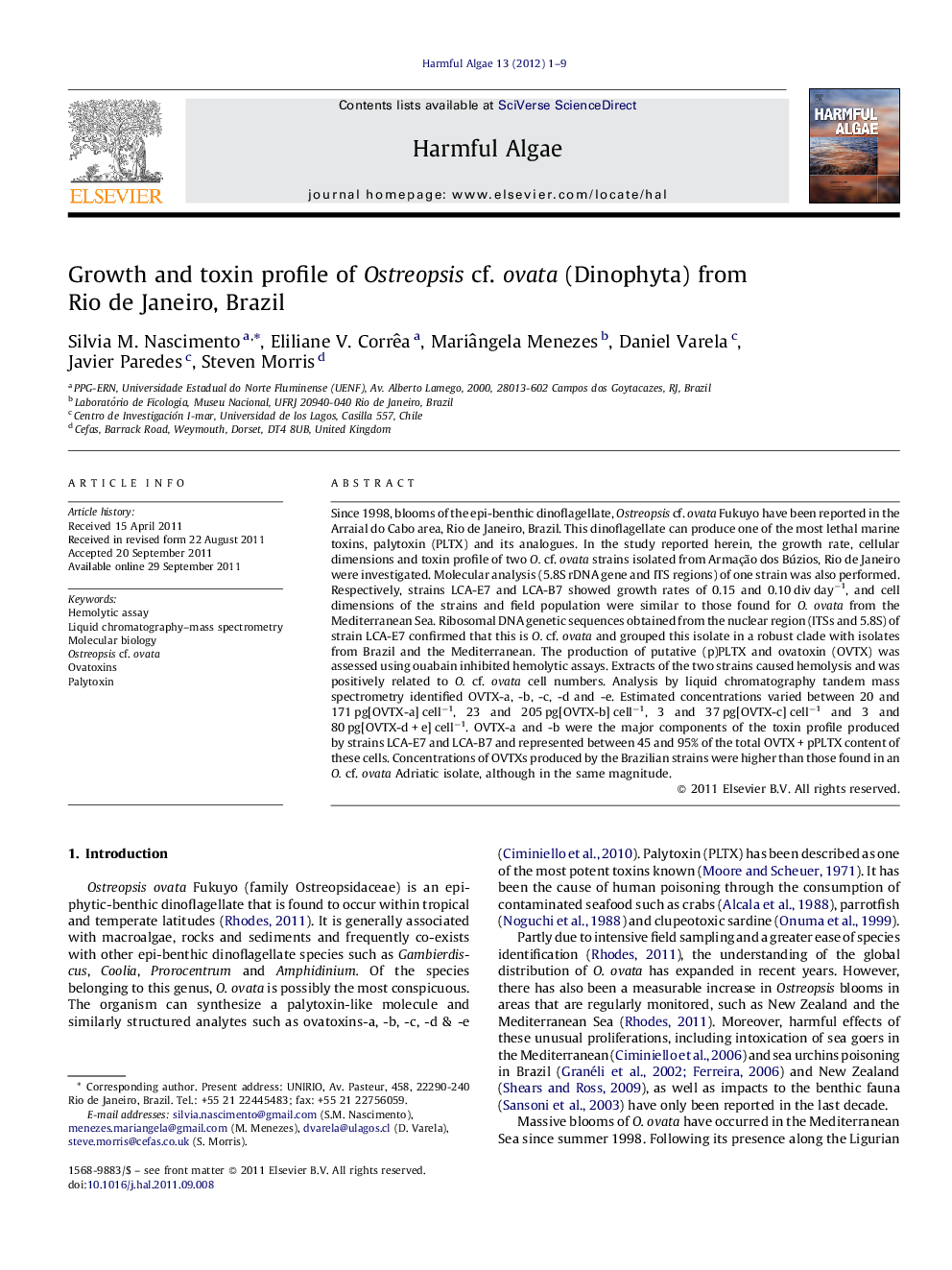| Article ID | Journal | Published Year | Pages | File Type |
|---|---|---|---|---|
| 4545649 | Harmful Algae | 2012 | 9 Pages |
Since 1998, blooms of the epi-benthic dinoflagellate, Ostreopsis cf. ovata Fukuyo have been reported in the Arraial do Cabo area, Rio de Janeiro, Brazil. This dinoflagellate can produce one of the most lethal marine toxins, palytoxin (PLTX) and its analogues. In the study reported herein, the growth rate, cellular dimensions and toxin profile of two O. cf. ovata strains isolated from Armação dos Búzios, Rio de Janeiro were investigated. Molecular analysis (5.8S rDNA gene and ITS regions) of one strain was also performed. Respectively, strains LCA-E7 and LCA-B7 showed growth rates of 0.15 and 0.10 div day−1, and cell dimensions of the strains and field population were similar to those found for O. ovata from the Mediterranean Sea. Ribosomal DNA genetic sequences obtained from the nuclear region (ITSs and 5.8S) of strain LCA-E7 confirmed that this is O. cf. ovata and grouped this isolate in a robust clade with isolates from Brazil and the Mediterranean. The production of putative (p)PLTX and ovatoxin (OVTX) was assessed using ouabain inhibited hemolytic assays. Extracts of the two strains caused hemolysis and was positively related to O. cf. ovata cell numbers. Analysis by liquid chromatography tandem mass spectrometry identified OVTX-a, -b, -c, -d and -e. Estimated concentrations varied between 20 and 171 pg[OVTX-a] cell−1, 23 and 205 pg[OVTX-b] cell−1, 3 and 37 pg[OVTX-c] cell−1 and 3 and 80 pg[OVTX-d + e] cell−1. OVTX-a and -b were the major components of the toxin profile produced by strains LCA-E7 and LCA-B7 and represented between 45 and 95% of the total OVTX + pPLTX content of these cells. Concentrations of OVTXs produced by the Brazilian strains were higher than those found in an O. cf. ovata Adriatic isolate, although in the same magnitude.
► Two Ostreopsis cf. ovata strains isolated from Rio de Janeiro were investigated. ► The toxin profile, growth rate and molecular data were analysed. ► LC–MS/MS identified OVTX-a, -b, -c, -d, -e and pPLTX. ► Respectively strains LCA-E7 and LCA-B7 showed growth rates of 0.15 and 0.10 div day−1. ► 5.8S rDNA gene and ITS regions confirmed that this is O. cf. ovata.
